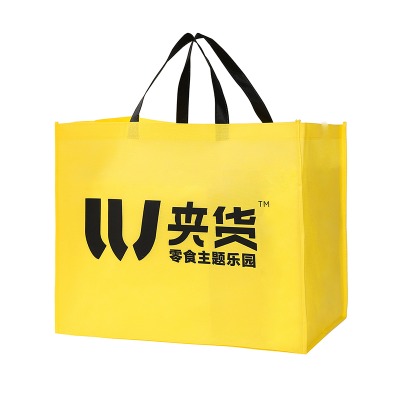Inquiry
Inquiry

Non woven bags have become increasingly popular as an eco-friendly alternative to plastic bags, widely used in retail, promotional events, and everyday shopping. Understanding the typical production process at a non woven bag manufacturer sheds light on how these durable and reusable bags are made to meet various customer needs. The process involves several key steps, from raw material preparation to finishing touches, ensuring the bags are both functional and visually appealing.
The production usually begins with the sourcing of raw materials, primarily polypropylene (PP) granules. These granules serve as the base for producing non woven fabric through a process called spunbonding. In spunbond technology, the polypropylene granules are melted and extruded through fine nozzles to create continuous filaments. These filaments are then laid randomly on a conveyor belt to form a web-like structure. Heat and pressure are applied to bond the fibers together, creating a strong and lightweight fabric that is the foundation of non woven bags.
Once the non woven fabric is produced, the manufacturer cuts it into sheets or rolls of the desired size. These fabric pieces are then ready for further processing according to the bag design and customer specifications. Cutting is done with precision to reduce material waste and ensure consistency across production batches. Some manufacturers use automated cutting machines to enhance accuracy and speed.
The next stage involves printing or laminating the fabric if the bags require branding, patterns, or protective coatings. Printing is typically done using techniques such as screen printing or digital printing. Screen printing is common for bulk orders with simple designs, while digital printing offers more flexibility for detailed or multi-colored graphics. Laminating adds a thin plastic layer to the fabric, making the bags water-resistant and improving durability. Both printing and laminating are carefully controlled to maintain fabric integrity.
After the fabric preparation, the manufacturing process moves to assembly. The cut and printed fabric pieces are sewn or heat-welded together to form the bag’s shape. Sewing is the traditional method, providing strong seams and allowing for different styles such as gusseted or flat bags. Heat welding uses high temperatures to fuse fabric edges without thread, offering a cleaner look and sometimes faster production for specific designs. Additional components like handles, zippers, or pockets are also attached during this stage.
Quality control is an essential part of the process at any non woven bag manufacturer. Inspections are carried out throughout production to check fabric strength, print clarity, seam durability, and overall finish. Defective products are removed or reworked to meet quality standards. This attention to detail ensures that customers receive bags that perform well under everyday use.
The finished bags are packaged and prepared for shipment. Packaging may vary depending on order size and customer requirements, but it typically involves bundling bags in cartons or shrink wrap to protect them during transport. Efficient packing helps reduce damage and facilitates handling for distributors and retailers.
The typical production process at a non woven bag manufacturer includes raw material melting and spunbond fabric creation, cutting, printing or laminating, assembly by sewing or welding, quality control, and packaging. Each step is designed to produce durable, eco-friendly bags that meet a variety of functional and aesthetic needs. Understanding this process highlights the careful balance between manufacturing efficiency and product quality in the non woven bag industry.
Join Us
For 12 years, we have focused on the production and manufacturing of handbags, constantly innovating and researching.
Seed Message
Megalith